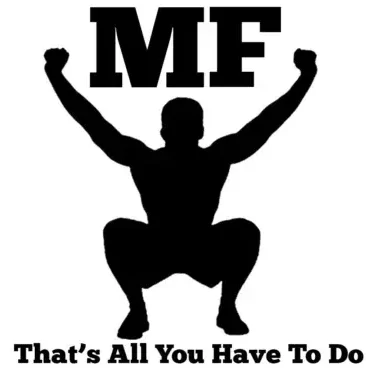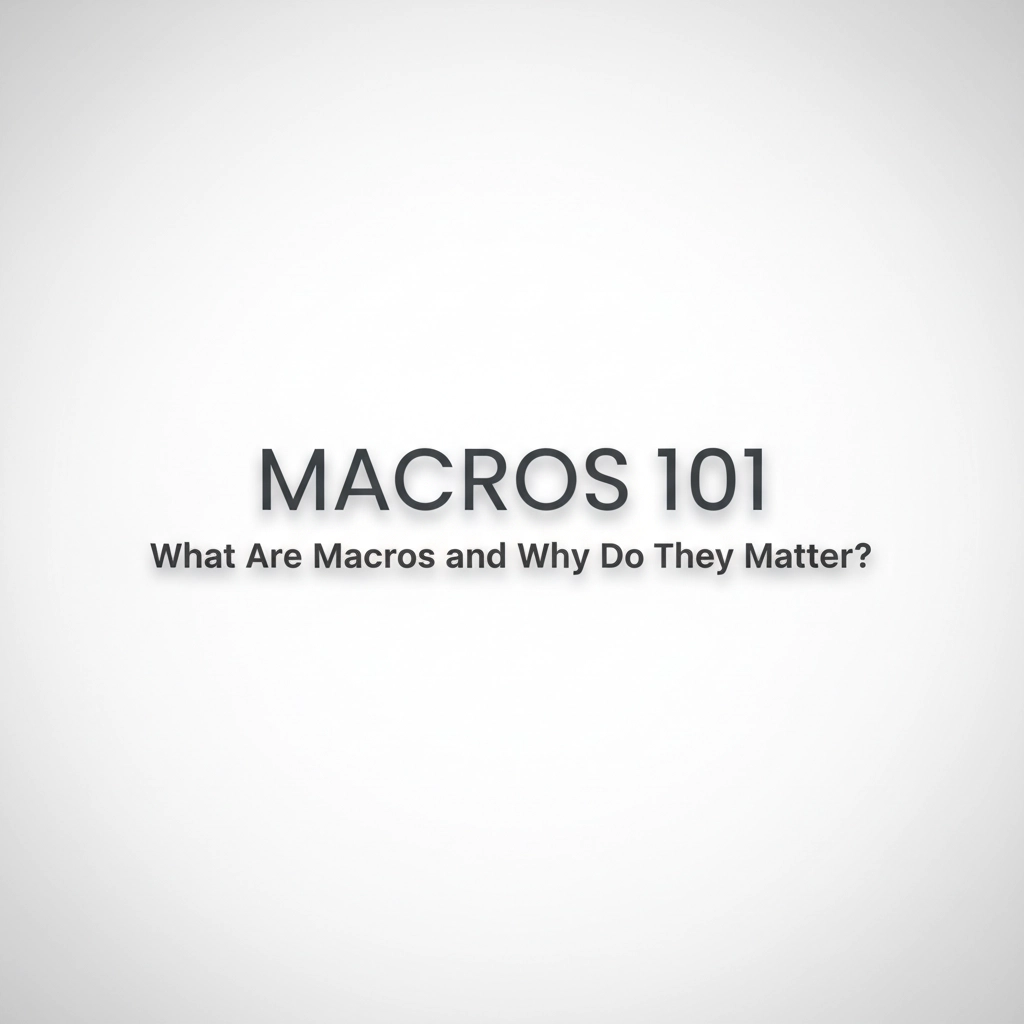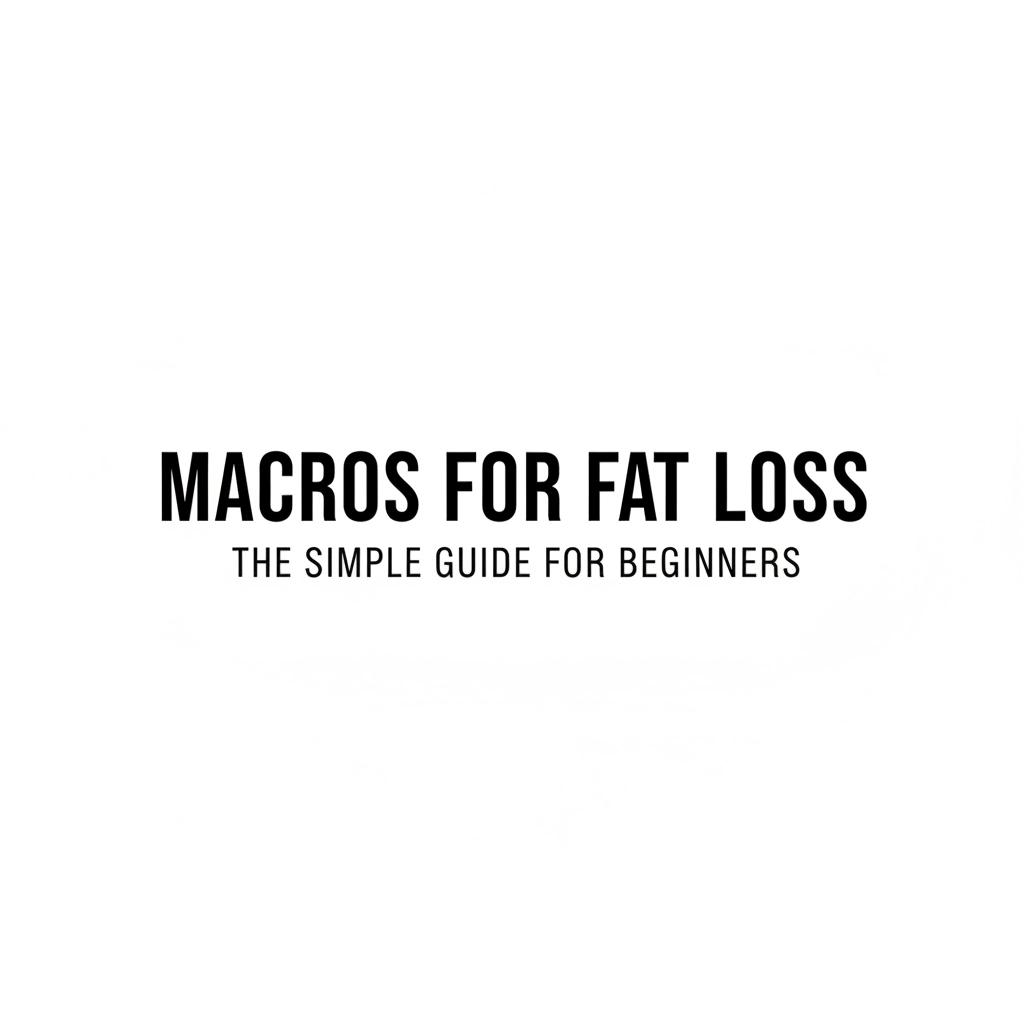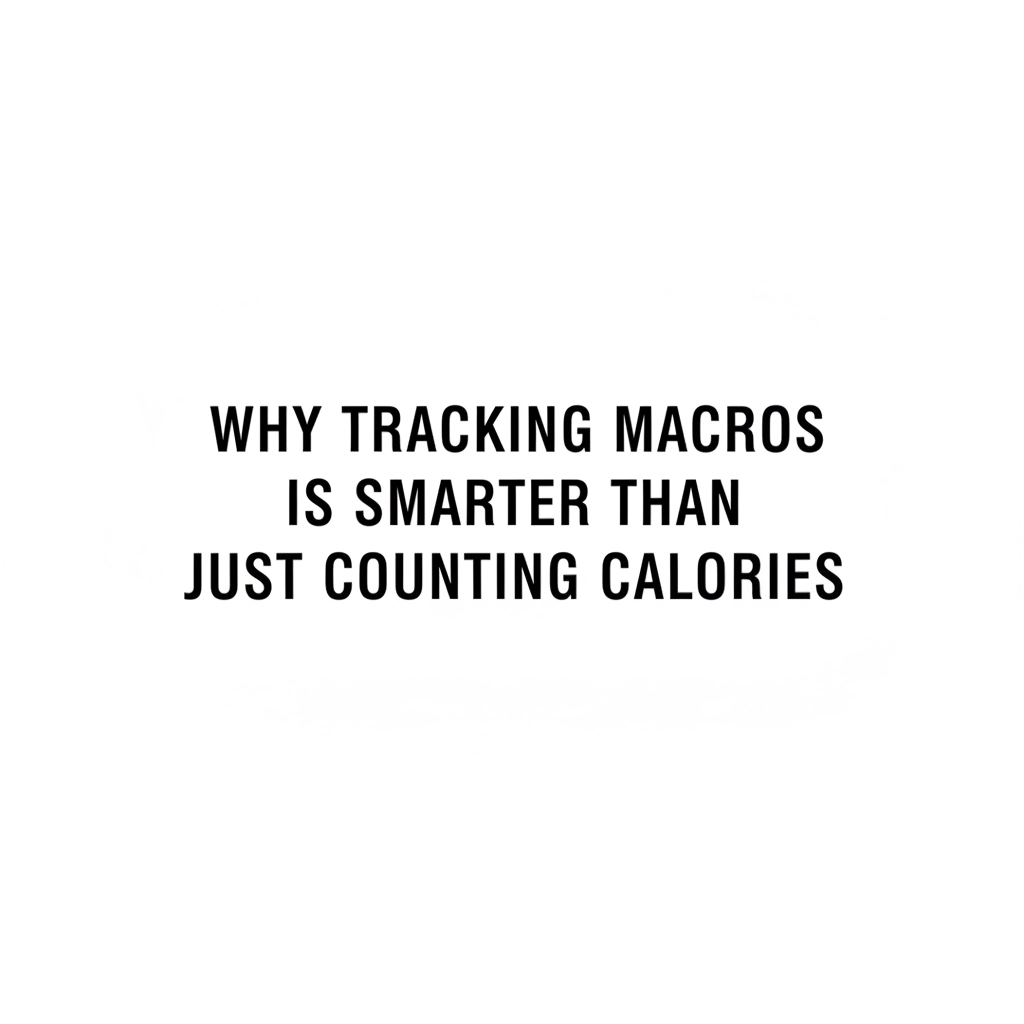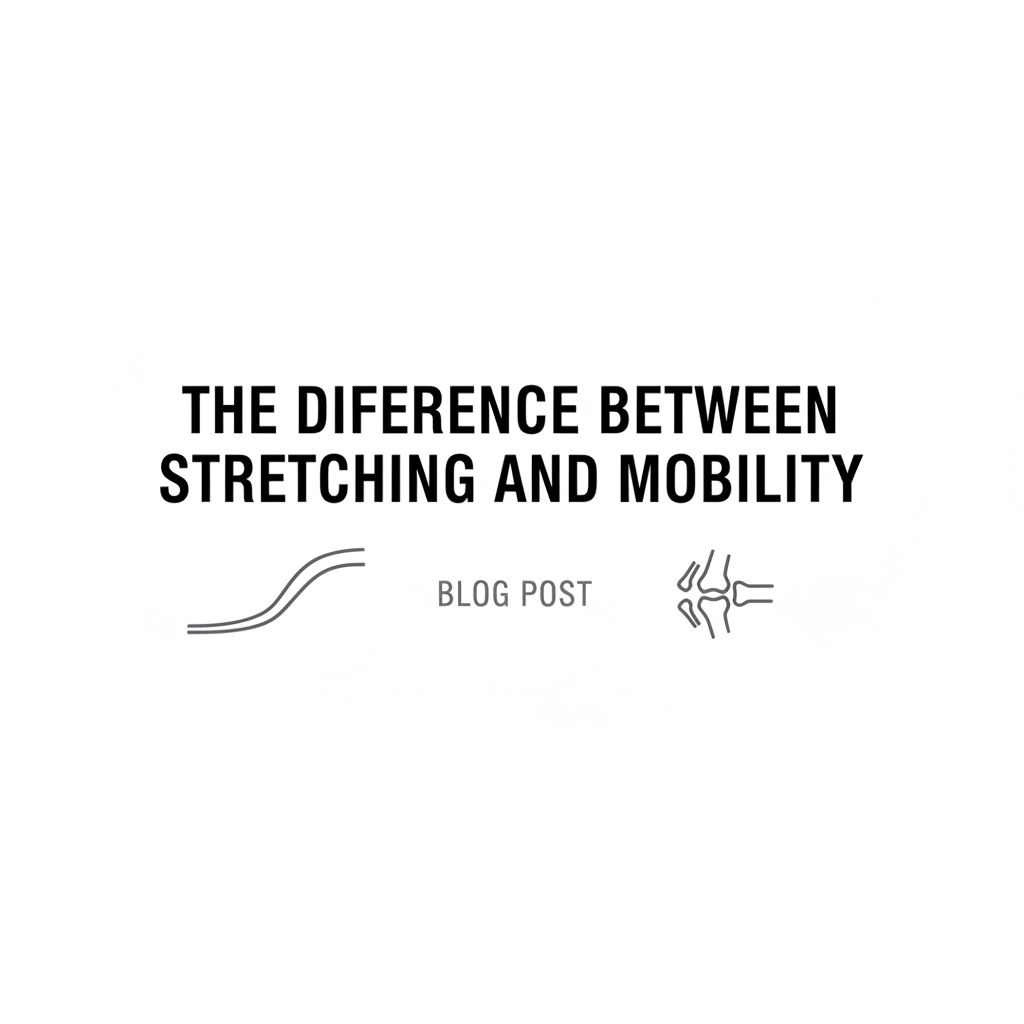Macros 101: What Are Macros and Why Do They Matter?
If you've ever wondered what all the fuss is about macros, you're not alone. The term gets thrown around a lot in fitness circles, but what does it actually mean for you? Simply put, macros (short for macronutrients) are the three main types of nutrients your body needs in large amounts to function at its best: protein, carbohydrates, and fats. Think of macros as the fuel that keeps your engine running smoothly. Just like your car needs the right type and amount of gas, your body needs the right balance of these three nutrients to help you feel energized, maintain a healthy weight, and stay strong as you age. The beauty of understanding macros is that it takes the guesswork out of eating well. Instead of following complicated diet rules or cutting out entire food groups, you'll learn how to give your body exactly what it needs to thrive. The Three Macronutrients: Your Body's Essential Team Let's break down each macronutrient in simple terms so you can see how they work together to keep you feeling your best. Protein: Your Body's Repair Crew Protein is like your body's construction team. Every day, your muscles, organs, and tissues need maintenance and repair, and protein provides the building blocks to get the job done. As we age, this becomes even more important because our bodies naturally start to lose muscle mass if we don't give them enough protein. You'll find protein in foods like: Lean meats, fish, and poultry Eggs and dairy products Beans, lentils, and nuts Greek yogurt and cottage cheese Why protein matters more as you age: Your body becomes less efficient at using protein, which means you actually need more of it to maintain muscle mass and strength. Getting enough protein helps you stay independent, reduces your risk of falls, and keeps your metabolism humming along. Each gram of protein provides 4 calories, but here's the bonus – your body burns more calories digesting protein than it does processing carbs or fats. It's like getting a metabolic boost with every meal. Carbohydrates: Your Energy Source Carbohydrates are your body's preferred fuel source. Think of them as the gas in your tank – they provide quick, easily accessible energy for everything from your morning walk to your brain function throughout the day. Not all carbs are created equal, though. You'll want to focus on: Whole grains like brown rice, quinoa, and oats Fruits and vegetables Sweet potatoes and other starchy vegetables Legumes and beans The carb confusion cleared up: You might have heard that carbs are "bad," but that's not the whole story. Your brain runs almost exclusively on glucose (which comes from carbs), and your muscles need carbs to perform their best. The key is choosing nutrient-dense carbs that provide vitamins, minerals, and fiber along with energy. Like protein, carbohydrates provide 4 calories per gram. The difference is that your body can quickly convert carbs into energy, making them perfect for fueling your activities. Fats: Your Body's Multitasker Fats often get a bad reputation, but they're essential for your health. Think of healthy fats as your body's multi-tool – they help with hormone production, keep your skin healthy, help you absorb important vitamins, and provide long-lasting energy. Focus on these healthy fat sources: Avocados and olive oil Nuts and seeds Fatty fish like salmon and sardines Coconut oil and grass-fed butter Why you need fats in your diet: Fats are the most calorie-dense macronutrient at 9 calories per gram, which means a little goes a long way. They help you feel satisfied after meals and play a crucial role in brain health – something that becomes increasingly important as we age. Why Macros Matter More as You Age Understanding your macros becomes even more valuable as you get older. Your body's needs change, and knowing how to fuel it properly can make a huge difference in how you feel every day. Maintaining Muscle Mass and Strength After age 50, we naturally start losing muscle mass at a rate of about 1-2% per year. But here's the good news – getting enough protein combined with regular exercise can slow or even reverse this process. When you track your macros, you ensure you're getting enough protein to maintain and build muscle. Supporting Your Metabolism Your metabolism naturally slows down as you age, but the right balance of macros can help keep it running efficiently. Protein has the highest thermic effect (meaning it burns the most calories during digestion), while the right amount of carbs keeps your energy stable throughout the day. Managing Weight and Energy Levels Many people struggle with weight management and energy dips as they age. Understanding your macros helps you eat the right amounts of each nutrient to maintain a healthy weight while keeping your energy steady from morning to night. Supporting Overall Health Each macronutrient plays a role in different aspects of your health. Protein supports immune function, carbs fuel your brain, and healthy fats reduce inflammation and support heart health. Getting the right balance helps you feel your best in every area of life. How to Track Your Macros (The Simple Way) Now that you understand what macros are and why they matter, you might be wondering how to actually put this knowledge into practice. The good news is that tracking your macros doesn't have to be complicated or time-consuming. Start with the basics: A good general starting point for most adults is: Protein: 25-30% of your total calories Carbohydrates: 40-45% of your total calories Fats: 25-35% of your total calories But remember, these are just starting points. Your ideal macro ratio depends on your individual goals, activity level, and health status. Make it easier with the right tools: Instead of trying to calculate everything by hand, use a macro calculator designed specifically for your needs. The MacroSculpt Macro Calculator takes the guesswork out of the equation by providing personalized recommendations based on your age, activity level, and goals. This calculator is specifically designed with
